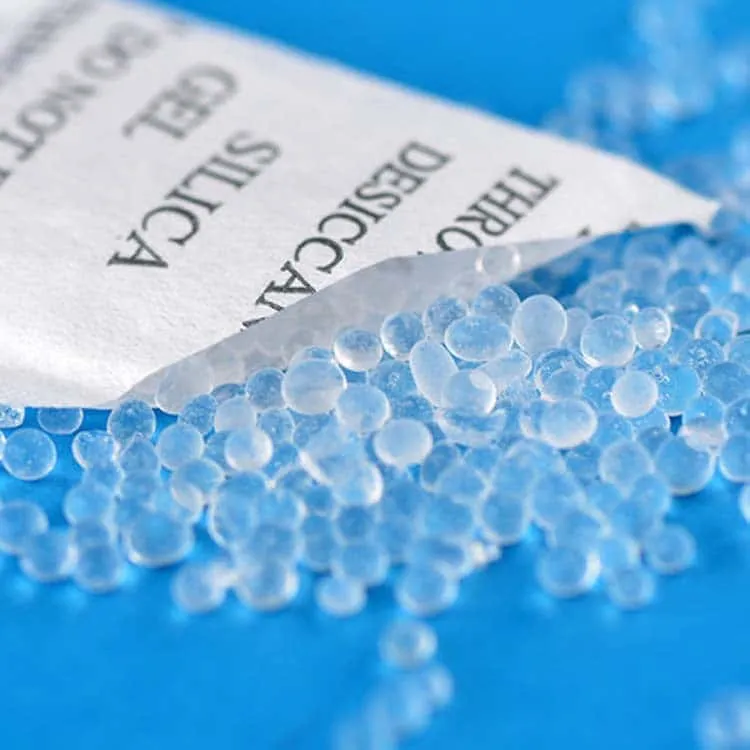

The main ingredient of silica gel desiccant is silicon dioxidewith a microporous structure, which has strong moisture absorption ability, non-toxic, tasteless, odorless, chemically stable, and is a highly active adsorption material.
Desiccant
SiO₂
7631-86-9
2811221000
The main ingredient of silica gel desiccant is silicon dioxidewith a microporous structure, which has strong moisture absorption ability, non-toxic, tasteless, odorless, chemically stable, and is a highly active adsorption material. It is usually prepared by the reaction of sodium silicate and sulfuric acid, and after a series of production processes such as aging and acid foaming. Silica gel desiccant is an amorphous substance, its appearance is transparent or translucent, mostly bead-like or irregular granules, and its chemical formula is mSiO₂·nH2O. Because silica gel desiccant has excellent moisture-proof and adsorption performance, it is widely used in food, medicine, bags, shoes and hats, instruments, equipment, textiles and other industries. In storage and transportation, silica gel desiccant can play a role in controlling the relative humidity of the environment, reduce and slow down the moisture, mildew and rust.
| Item | Data | |
|---|---|---|
| Adsorption capacity at 25°C, % | RH=20% | ≥10 |
| RH=50% | ≥25 | |
| RH=90% | ≥35 | |
| Qualified beads rate | >90% | |
| Qualified size Rate | >98% | |
| Bulk Density | >750 g/L | |
| Drying Loss | <2% or<5% | |
| PH | 4~8 | |
Sorting:fine porous silica gel, coarse-pore silica gel, blue silica gel, orange silica gel, etc
Size:0.2-1mm, 0.5-1.5mm, 1-2mm, 1-3mm, 2-4mm, 3-5mm, 4-8mm
Packing:20kg/bag, 25kg/bag, 850kg/bag, 900kg/bag, etc.
| Food | Pharmacy | Clothes | Electronics |
|---|---|---|---|
|
|
|
|
Avoid direct contact with silica gel desiccant for a long time to avoid discomfort or allergic reaction to the skin;
Avoid inhaling silica gel dust during operation, if you accidentally inhale a large amount of dust, you should leave the scene immediately and seek medical attention in time;
When storing silica gel, it should be placed in a dry and ventilated place to avoid contact with acids and alkalis.
Silica gel desiccant has strong moisture absorption ability, so it should be stored in a dry place, sealed and preserved, and isolated from air. There should be a shelf between the package and the ground, and it should be avoided from rain, moisture and sun during transportation.